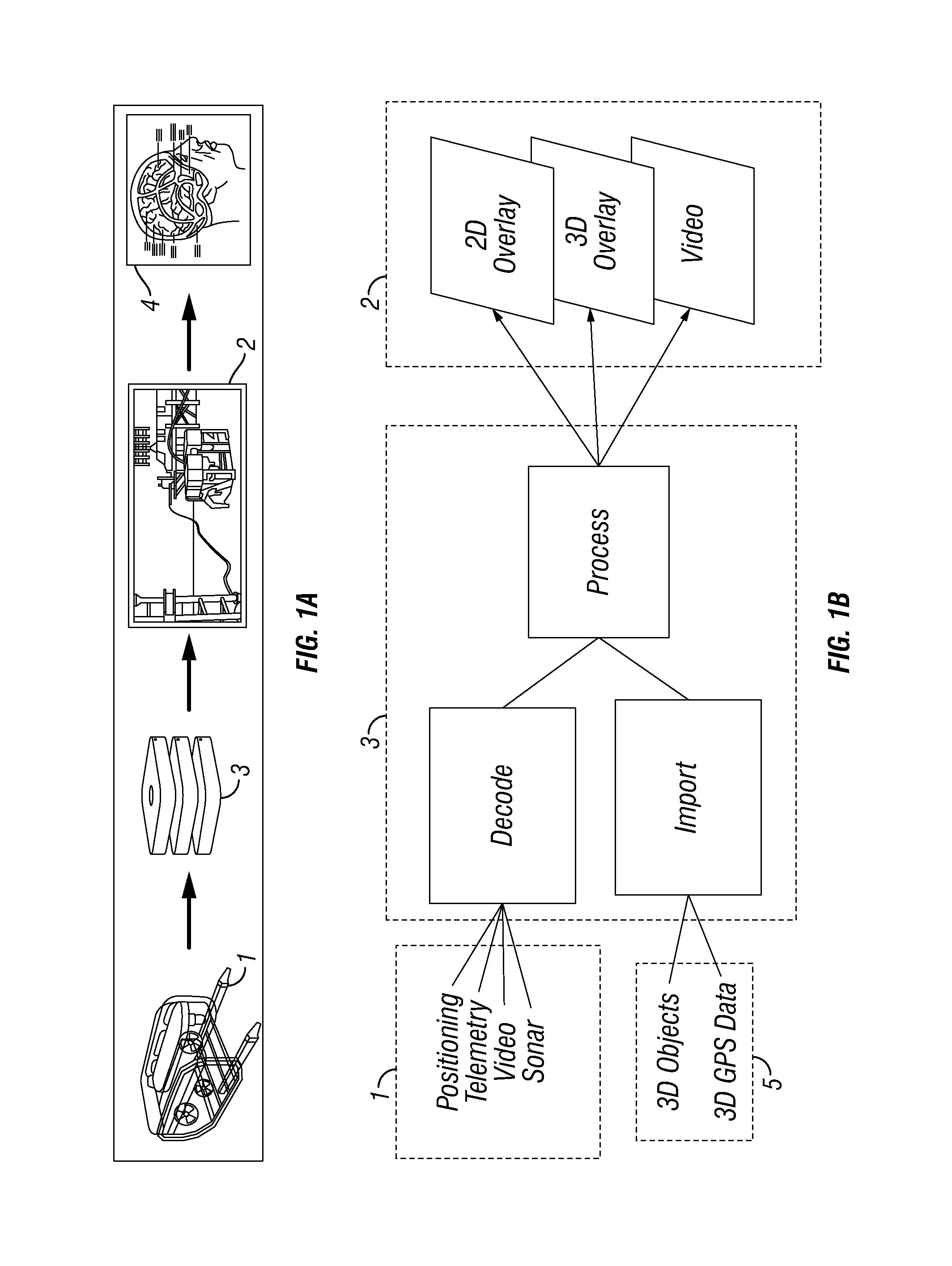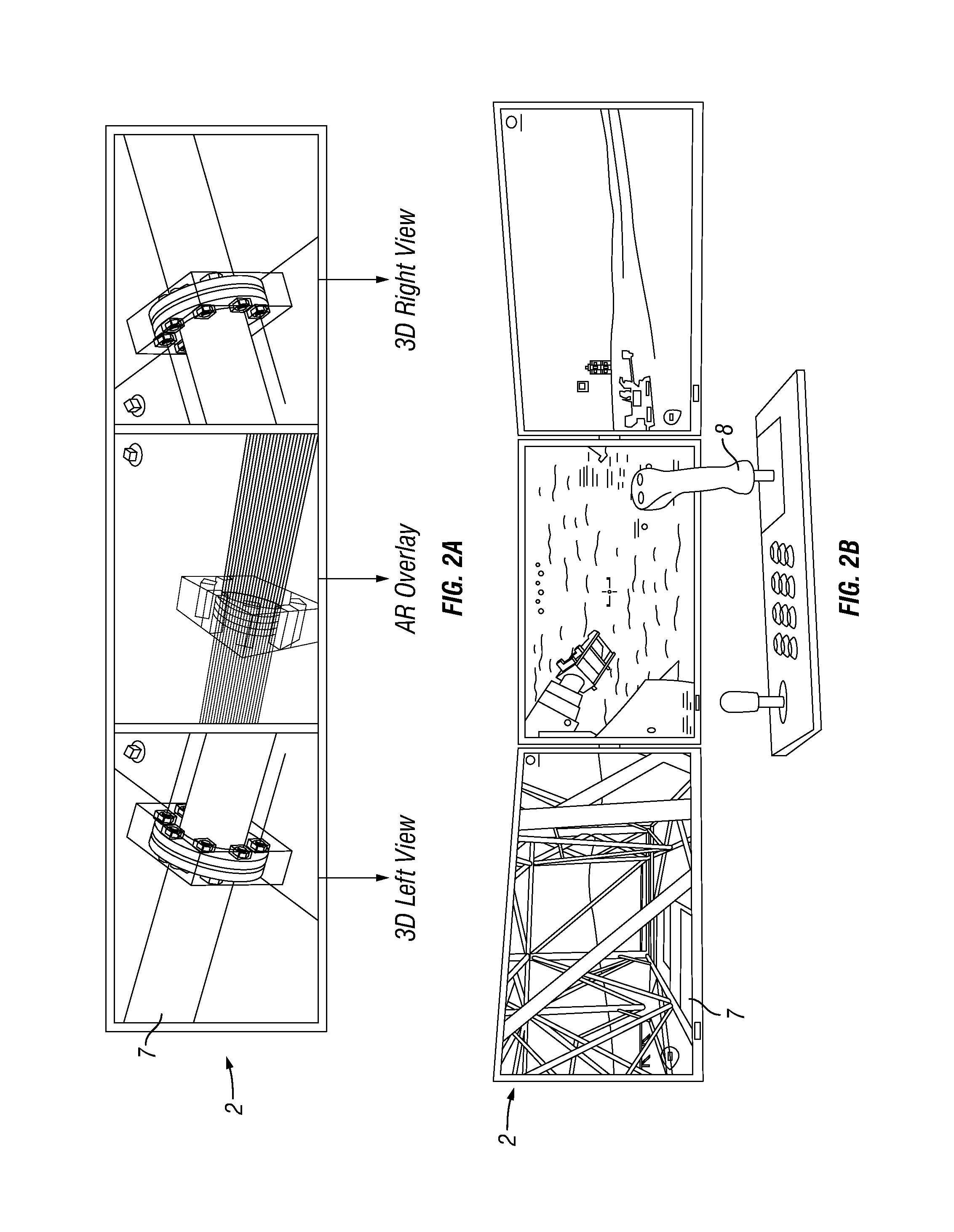System and method of operation for remotely operated vehicles with superimposed 3D imagery
a technology of remote operation and 3d imagery, applied in the field of augmented reality navigation, can solve the problems of not providing crucial devices for dealing with the vicissitudes of underwater navigation, failing to provide a navigation interface that creates an immersive visual experience for the pilot or user, and inability to provide complete spatial awareness, so as to improve the way subsea operations are conducted, improve communication with supervisors, and improve the effect of visualization of the subsea environmen
- Summary
- Abstract
- Description
- Claims
- Application Information
AI Technical Summary
Benefits of technology
Problems solved by technology
Method used
Image
Examples
Embodiment Construction
[0026]The invention provides system for operating a remotely operated vehicle comprising:[0027]a) a database module of 3D elements representing objects disposed in an operation environment of said vehicle, said 3D elements comprising data acquired by multibeam sonar;[0028]b) a virtual video generating module for generating a virtual video of incorporating said 3D elements;[0029]c) a video camera mounted to the vehicle for generating a real video of the operation environment of said vehicle;[0030]d) a synchronizing module for synchronizing an angle and position of a virtual camera with an angle and position of the video camera mounted to the vehicle, wherein the virtual camera defines a field of view for the virtual video; and[0031]e) a superimposition module for superimposing said virtual video and said real video, wherein said superimposition module is configured to modulate the transparency or opaqueness of a region of lesser interest in one of the virtual or real videos such that...
PUM
 Login to View More
Login to View More Abstract
Description
Claims
Application Information
 Login to View More
Login to View More - R&D
- Intellectual Property
- Life Sciences
- Materials
- Tech Scout
- Unparalleled Data Quality
- Higher Quality Content
- 60% Fewer Hallucinations
Browse by: Latest US Patents, China's latest patents, Technical Efficacy Thesaurus, Application Domain, Technology Topic, Popular Technical Reports.
© 2025 PatSnap. All rights reserved.Legal|Privacy policy|Modern Slavery Act Transparency Statement|Sitemap|About US| Contact US: help@patsnap.com



